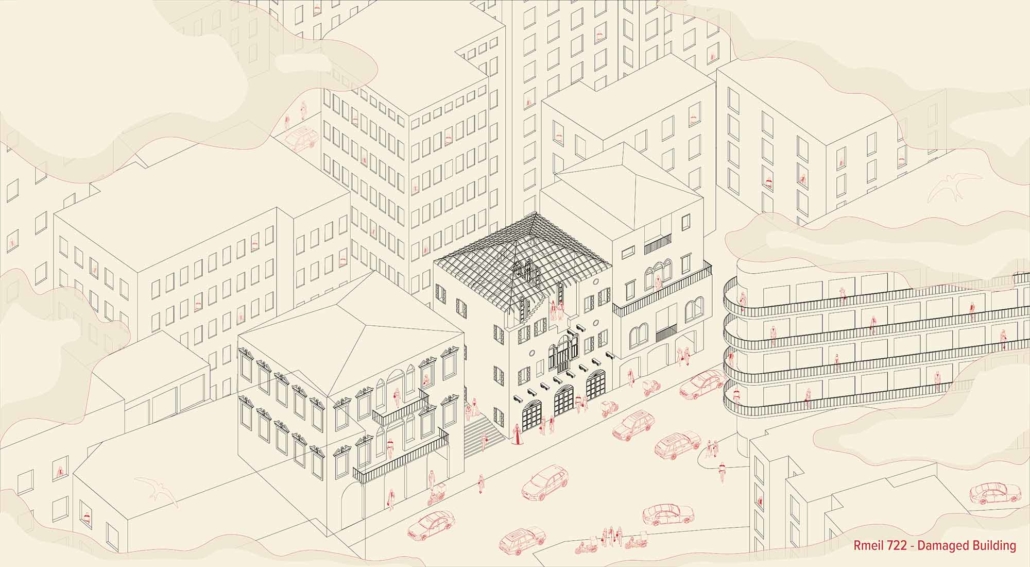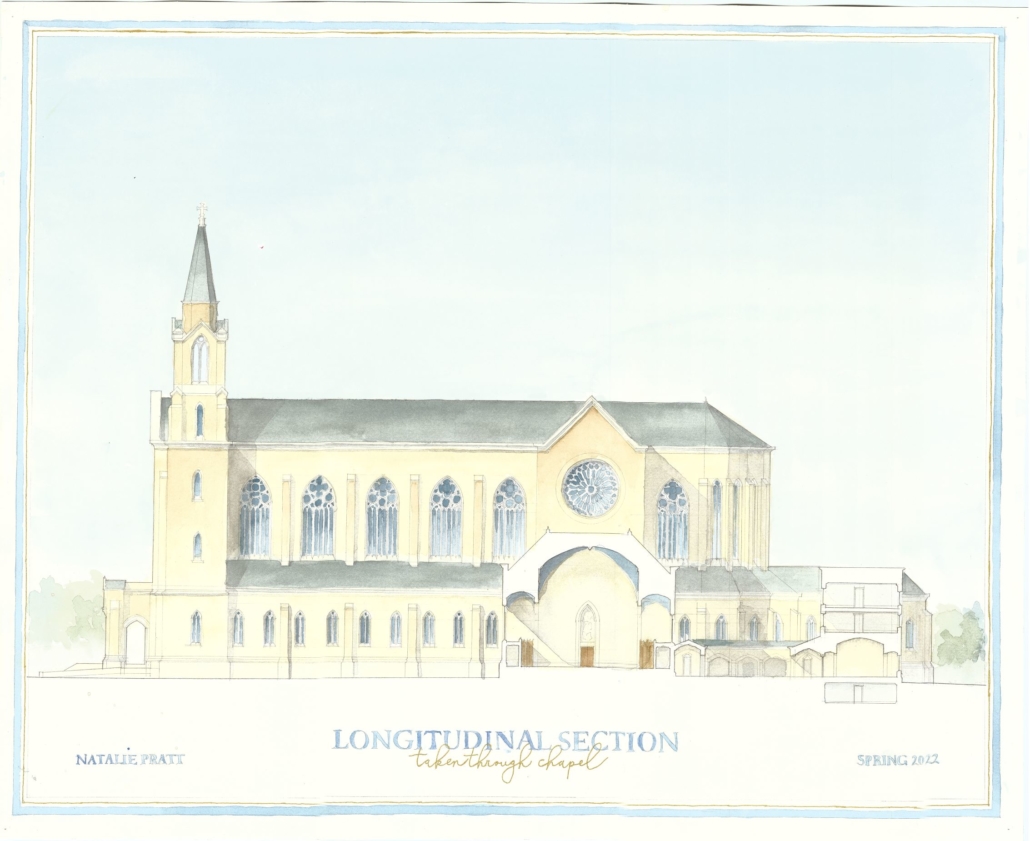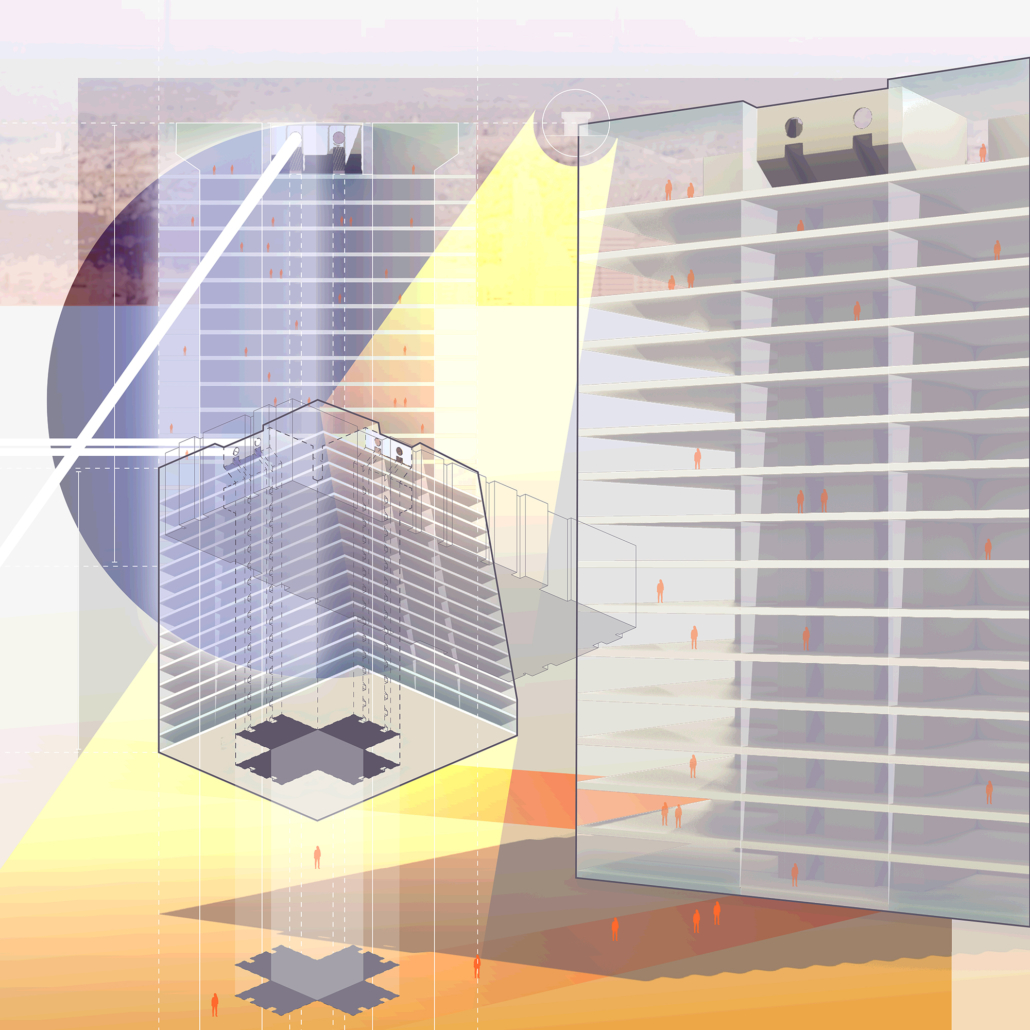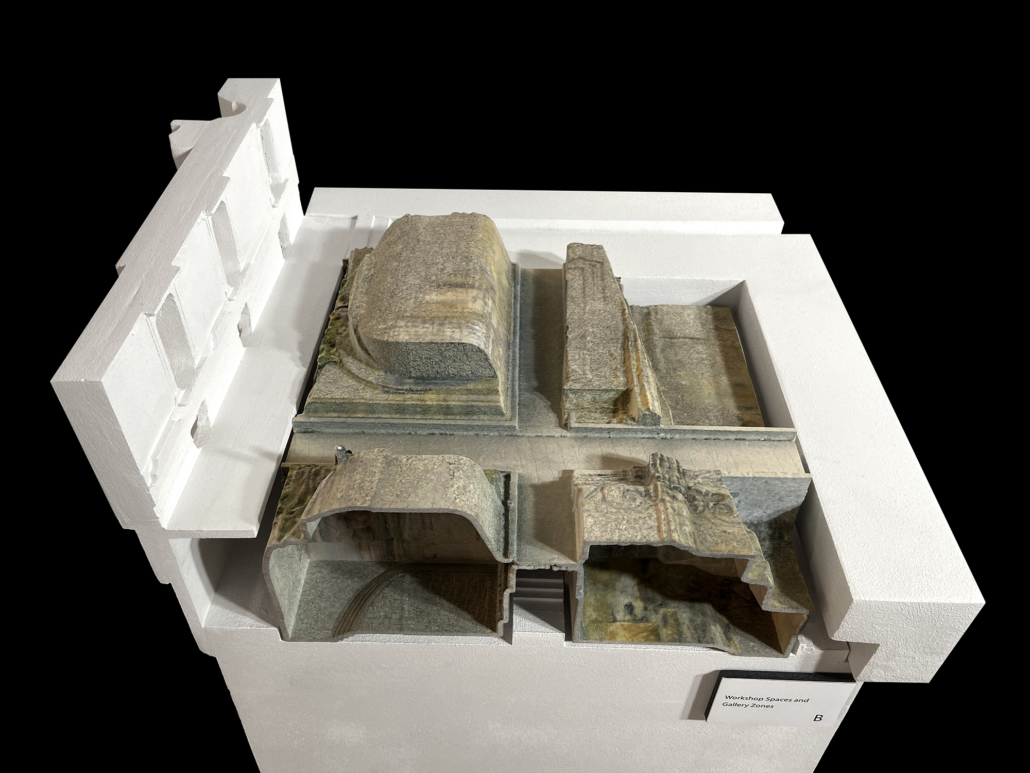Study Architecture Student Showcase - Part XII
For the final installment of the 2022 Student Showcase series we focus on five student projects that take a closer look at historic preservation. We begin in Beirut, a city rich in history, that has seen a range of disasters over the decades and remains in dire need of restoring its heritage sites. Then a look at a church in Wisconsin, a building on a university campus and to a museum in Spain where historic preservation allows us the opportunity to glance into the past.
Incase you missed past installments, check out Part I, Part II, Part III, Part IV, Part V, Part VI, Part VII, Part VIII, Part IX, Part X and Part XI.
Rebuilding After Disaster: Beirut’s Heritage Houses by Gabrielle Kalouche, M.Arch ’22
University of Cincinnati | Advisor: Elizabeth Riorden
Heritage is always at risk when developers and advocates tear down and replace structures for their own profit and commercial purposes. Preserving sites and their history has become more popular and has been gaining a foothold in movements across the world. The appropriation of the intervention on historic sites has become a subject prone to criticism from the polarities of conservative to more liberal heritage conservationists.
In Beirut, Lebanon, a city that has been rebuilt several times throughout history and now faces the need of intervention after sustaining severe damages from the 2020 Port Blast, the debate is a sensitive subject. The efforts to rebuild following the Civil War (1975 – 1990) are criticized for the demolition of historic structures and gentrification. What lesson can be learned and applied to the current situation of Beirut and its few remaining heritage structures?
This thesis aims to approach the subject of rebuilding after the Port Blast by using methods of adaptive reuse to preserve the history and memories embedded in the structures while bringing new life and purpose to their post-blast conditions.
Instagram: @gabriellekalouche, @daapsaid, @edmitchell1909
The National Shrine of Our Lady of Good Help by Natalie Pratt, B.Arch ’22
University of Notre Dame | Advisor: Sean Patrick Nohelty, AIA
The vision for the site includes a processional pilgrimage route leading up the hill to the church, meditation trails through the woods, a visitor center and gift shop, and a votive chapel at the location of the apparition as the most sacred and secluded place of prayer on the site. Inspired by the history of the site, the architecture takes cues from Baltic Gothic architecture of Belgium and the local brick Gothic church architecture built by immigrants.. The brick is the cream-colored brick for which Milwaukee is so well known and which is very common on the Western side of Lake Michigan. Given the farms which serve as context, the design seeks to preserve the simplicity and humbleness of the site on which Our Lady appeared, while still allowing it to bring wonder to pilgrims, like a piece of Heaven among the fields.
The church is placed at the highest point on the site, across the river from the entrance, as is the apparition chapel, providing a sense of sacredness to both locations, as the pilgrim crosses the water to access the buildings. This also provides the path of procession, so important to pilgrimages. The church itself has two towers, symbolic of the two trees between which Our Lady appeared, with steps leading into the sanctuary raising the guest into the heavenly interior, a traditional Latin cross form, filled with the light from the stained glass windows.
Twisting Intersectionality: A Design Methodology Combining Quantitative and Qualitative Form-Finding and Phenotypic Diversification by Wesley Gonzalez-Colon, Sakshi Sharma and Soham Dongre, M.Arch ’22
University of Illinois at Urbana-Champaign | Advisor: Yun Kyu Yi
The project provided an Extension to the Museum of Contemporary Art of Chicago (MCA). The site faces Michigan Lake, which is distant from the existing building. The view from the area towards Michigan Lake is partially unobstructed and connects visually towards the East direction. The site is rectangular, measuring 30 meters by 50 meters, and oriented north/south, having its longest elevations facing the MCA and Lake Shore Park. Overall, the site is surrounded by tall buildings, which cast a shadow, making the new building proposal less than the overall scale. Several challenges, including circulation, daylighting, accessibility, views, scale, and thermal performance, were considered through design and evaluation criteria. The challenges allowed the generation of a parametric design to evaluate architectural aesthetics, daylighting and thermal performance, accessibility, and views to achieve a proposal aiming to attend to different aspects of these.
The project uses a parametric design method to explore multi-objective optimization (MOO) to define a form based on measurable criteria. Two MOO were designed for the test: form-finding and envelope system diversification. The main challenge when optimizing was computational time and load to run various simulation tools to calculate complex form generation. Thus, the design methodology incorporates Artificial Neural Network (ANN) to reduce and simplify the simulation execution. In the final stage, image recognition was used to select the solution closest to personal preference. The project’s most significant contribution was integrating different simulation tools in the design process and using image recognizing to find design preferences and support the design selection process.
Instagram: @wesgc.design, @sakshiisharmaaa, @sohamdongre
Brutal Intentions: Transforming Brutalism & The Case for Crosley Tower by Anna Hargan, M.Arch ’22
University of Cincinnati | Advisor: Elizabeth Riorden & Michael McInturf
In the case for Crosley Tower, a concrete high rise associated with Brutalism, on the University of Cincinnati’s campus in Cincinnati, Ohio, demolition is soon approaching. Innovative methods of transformation, preservation, and demolition will alter the structures identity and provide hybridized solutions that challenge its unique existence. A matrix of iterations involving constraints of addition, subtraction, and combinations of both provides a selection of four designs to be iterated on a more detailed level. These four project proposals both meet and challenge the physical and metaphysical nature of Crosley Tower in order to realize potentials hindered by traditional, uninventive demolition.
Instagram: @annak_hargan, @daapsaid, @mcinturf.architects
Wall, Hall, Dust & Rust: Prado’s Critical Zone by Nur Esin Karaosman, B.Arch ’22
Southern California Institute of Architecture | Advisor: Maxi Spina
This is a project of speculative preservation. In the contemporary world, there is a problem of preservation beyond the maintenance of material conditions. There is an even more enigmatic problem of preserving the images we associate with history. Representations, constructed social meanings, and intellectual categories are ultimately the most valuable things to concern. It is as much an optical problem as it is a material one. In reverse, this project starts with looking at the walls, as how they appear to us today: Through their visible bodies, without their constructed meanings, with hyper-attention, through the lens of imaging technologies. This thesis looks at the preservation in highly controlled historic environments, where what we see and how things appear to us are tried to be preserved, through the light of today’s scanning technology. The competition call to expand the Prado Museum becomes where this thesis locates itself. This thesis considers the wall as the critical zone, the thickness, which is hard to understand, which is far from equilibrium, which is fragile and unknown; to create new zones in the highly controlled environment of Madrid, Spain. These zones become the spaces where we stitch the fragments of the existing surfaces that we have been occupying, back together again; with engaging both their physical decay, but also with another kind of decay, which happens virtually. The design of the extension is treated in this project as an unusual kind of collage problem.
With this seamless collage, in the historically charged site of the Prado, Spain; what we see, and the images are no longer preserved, but their scanned bodies and resolutions are used to create a new synthesis in order to generate multiple meanings, alternative histories, and speculations for future physical, virtual, and material realities.
Instagram: @esinkaraosman @maxispina
We hope you have enjoyed this series of student work. We will put out a call for submissions for the 2023 Study Architecture Student Showcase in the coming weeks, stay tuned!



































